The Fundamental Electronic Components: A Beginner’s Guide
Electronics are everywhere, from the phone you’re holding in your hand to the circuits controlling your home’s lighting. There are a few components that are common and fundamental to any electronics project. They are at the heart of all electronic devices and circuits.
Understanding these components is important because they are the foundation of all electronic systems. Whether you're tinkering with simple Arduino projects or dreaming of inventing the next big electronic product, you must first and foremost get familiar with these basic electronic components. In this in-depth article, we’ll explore six of them, their functions, their types, and some real-world applications.
Passive vs Active components, what’s the difference?
Before exploring each component, you need to first learn that electronic components are classified into two main categories: passive and active.
Both are essential to how circuits function, but they work in very different ways. Understanding the distinction between passive and active components will help you understand how electronic systems are designed and how they operate.
Passive electronic components are ones that can perform their functions without the need of a source of energy. Besides, a passive electronic component cannot generate energy, if it is in a circuit, it uses the electricity or energy already in that circuit to operate. These types of components do not generate power, instead, they mainly resist, store, or control the flow of electric current or voltage in a circuit without actively amplifying or generating signals.
Active electronic components are ones that require an external power source of energy to perform their functions. They are made using semiconductor materials like silicon and germanium. Active electronic components can manipulate a signal that is applied to them and turn it into a desired output signal by either amplifying, switching, or modulating that signal.
Now that you got an idea of what is a passive component and what is an active one, you can dive into the details.
Passive electronic components
Resistor
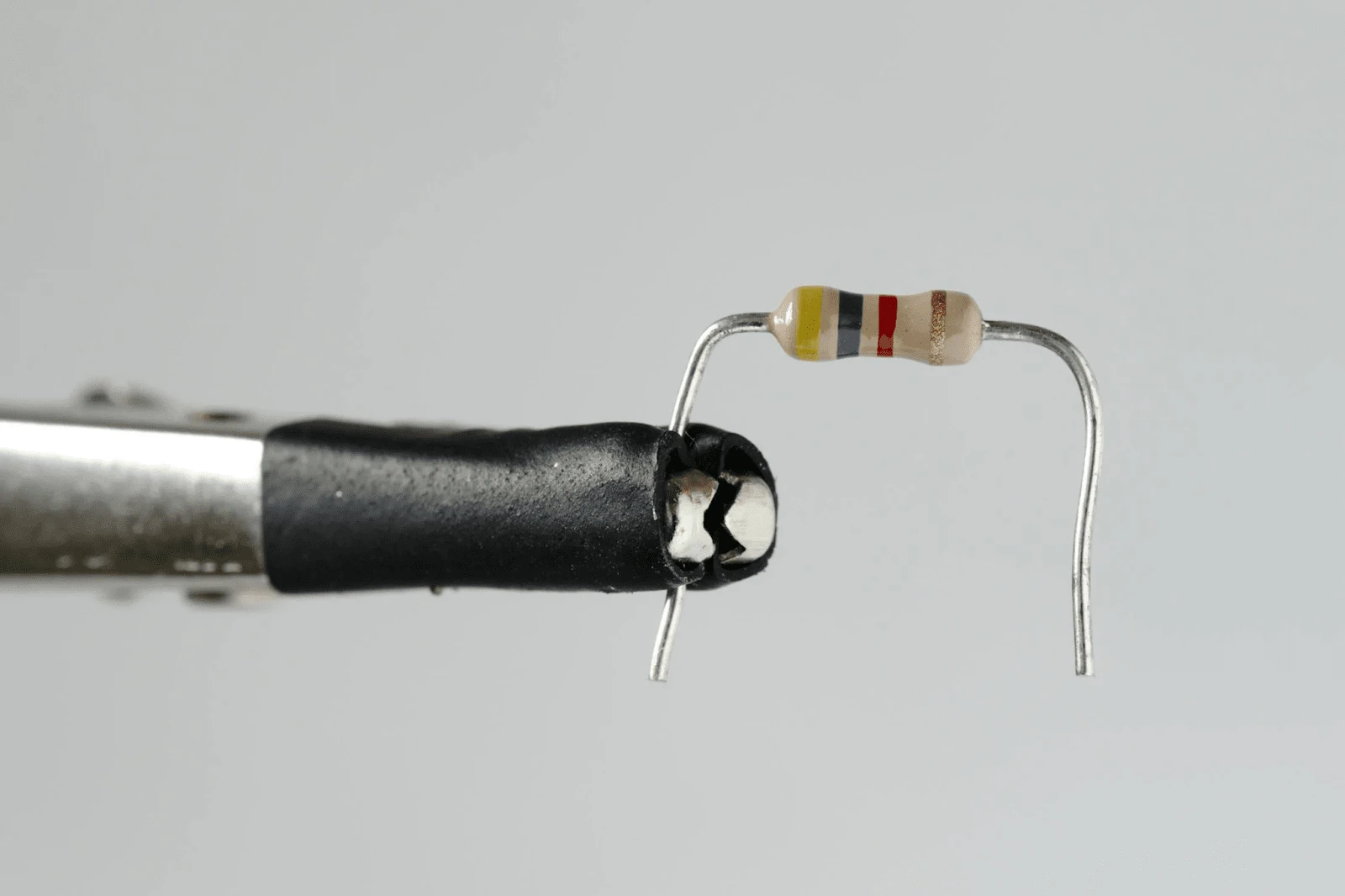
Found in almost all electronic circuits, the resistor is a passive electrical component with two terminals. A resistor is used to limit or regulate the flow of electric current in an electrical circuit.
A common analogy used to explain this is water flowing through a hosepipe: a resistor acts like a narrowing in the pipe, reducing the flow of water (current).
Unit & Formula
The SI unit of the resistor is Ohm (Ω)
Formula: Resistance R=V/I (Resistance = Voltage / Current Intensity)
symbol
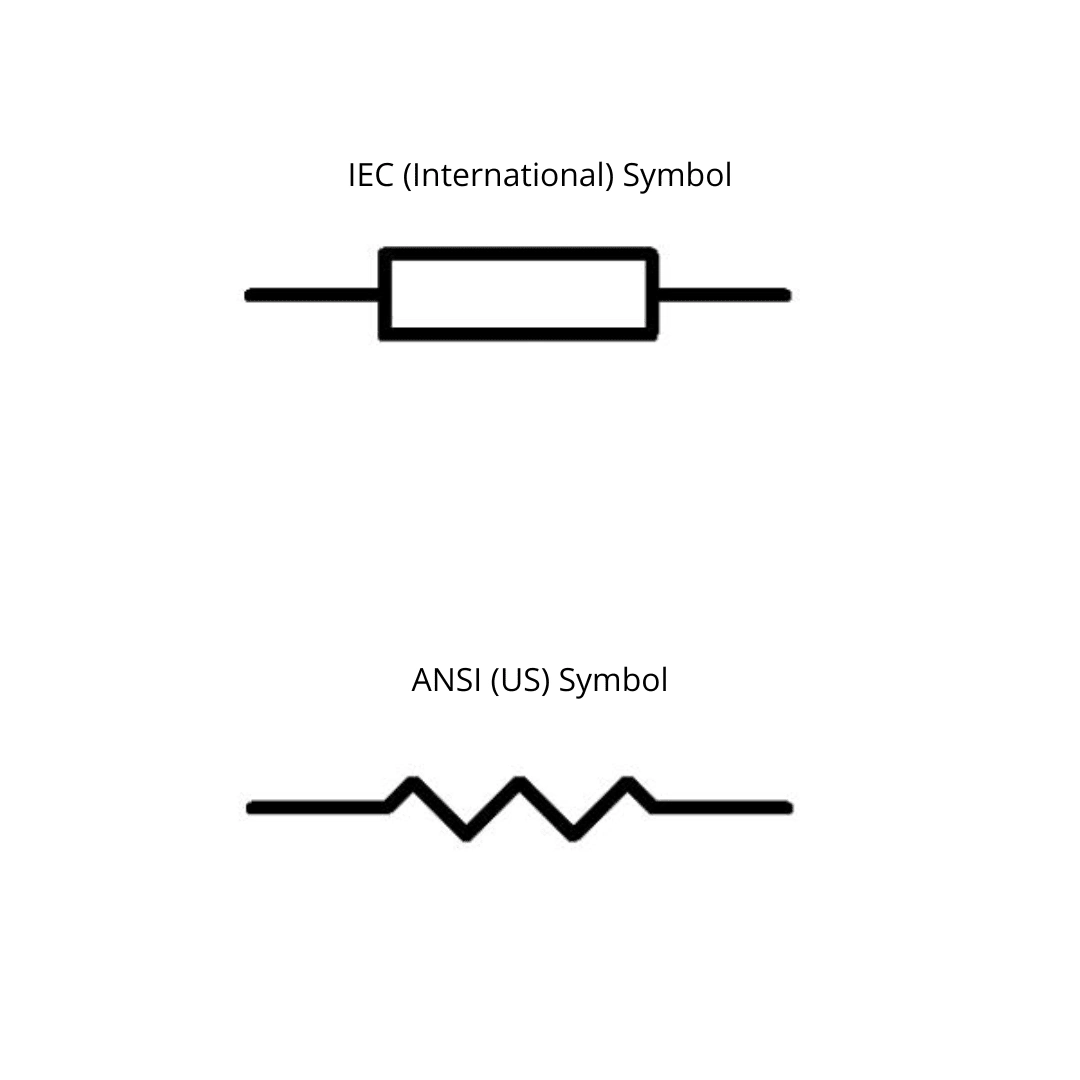
How it works in a circuit
A resistor opposes the flow of electric current. This creates a voltage drop between its two terminals. The strength of this opposition is determined by the resistance value of a resistor (measured in ohms). The larger the resistance, the less current can pass through. When current flows through a resistor, some electrical energy is converted into heat.
Common Values Used in Circuits
220Ω (for LEDs)
1kΩ (for pull-down/pull-up resistors)
10kΩ (for sensors, potentiometers)
100kΩ (for signal filtering)
Applications
Current Limiting: Protects LEDs and transistors.
Voltage Division: Creates voltage dividers in circuits.
Pull-up & Pull-down Resistors: Stabilizes digital signals in microcontrollers.
Filtering & Timing Circuits: Used with capacitors for RC circuits.
Heat Generation: Used in heating elements and power regulation.
Capacitor
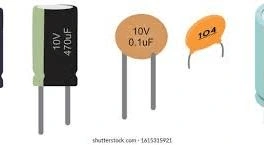
A capacitor is a passive electronic component that stores and releases electrical energy in a circuit. It acts like a small rechargeable battery, but charges and discharges very quickly, almost instantly.
A common analogy is a water tank: the capacitor stores electrical charge like a tank stores water and releases it when needed.
Unit and Formula
The SI unit of the capacitor is Farad (F)
Formula: Capacitance C = Q/V (Capacitance = Charge / Voltage)
Symbol:
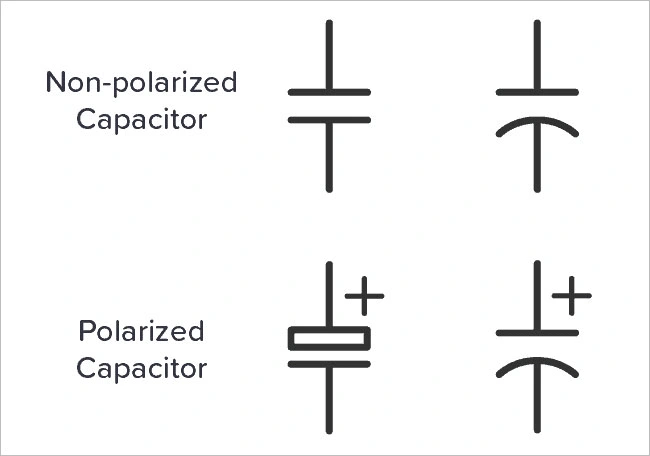
How It Works In A Circuit
A capacitor stores electrical energy in the form of an electric field between its two conductive plates, separated by an insulating material called the dielectric.
When a voltage is applied:
The capacitor charges (stores energy).
When needed, it discharges, releasing the stored energy into the circuit.
The charging and discharging speed is controlled by the circuit's resistance and is crucial in timing applications.
Common Values Used in Circuits
10pF – 100pF (for high-frequency circuits, oscillators)
1nF – 100nF (for signal filtering, decoupling)
1µF – 100µF (for power supply smoothing, timing circuits)
100µF – 1000µF (for energy storage, power applications)
Applications
Power Supply Filtering: Smooths voltage fluctuations.
Coupling & Decoupling: Blocks DC while allowing AC signals.
Timing Circuits: Works with resistors for oscillators.
Energy Storage: Used in camera flashes, power backup circuits.
Noise Filtering: Reduces interference in audio and RF circuits.
Inductor
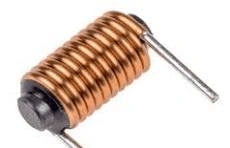
An inductor is a passive electronic component that stores energy in a magnetic field when electrical current flows through it. It opposes changes in current, making it useful for filtering, energy storage, and inductive coupling.
A common analogy is a flywheel: just as a flywheel resists changes in rotational speed, an inductor resists changes in current flow.
Units of Measurement
Unit: Henry (H)
Formula: V = L × (dI/dt) (Voltage = Inductance × Rate of Change of Current)
Symbol
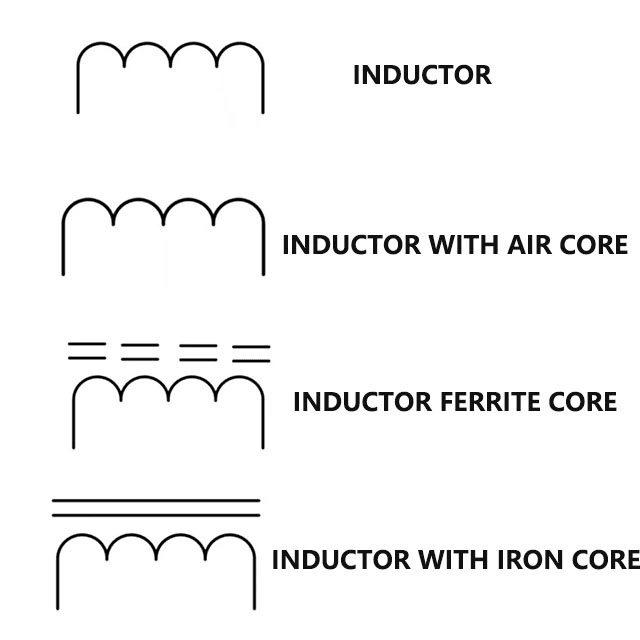
How It Works
An inductor consists of a coil of wire wrapped around a core. When current flows through it:
A magnetic field forms around the coil, storing energy.
If the current changes (increases or decreases), the inductor opposes this change by inducing a voltage in the opposite direction (Lenz's Law).
This property makes inductors useful in filtering, energy storage, and signal processing.
Common Values Used in Circuits
1µH – 100µH (for high-frequency circuits, RF applications)
100µH – 10mH (for power supply filtering, DC-DC converters)
10mH – 1H (for signal filtering, energy storage in power electronics)
Applications
Power Supply Filtering: Removes AC noise from DC signals.
Transformers: Used in AC voltage conversion.
RF & Communication Circuits: Filters and tunes radio signals.
DC-DC Converters: Stores and transfers energy efficiently.
Inductive Sensors: Used in metal detectors and proximity sensors.
Active electronic components
Diode
A diode is a semiconductor device that allows current to flow in only one direction while blocking it in the opposite direction. It acts as an electrical check valve, commonly used for rectification, signal processing, and protection circuits.
A common analogy is a one-way door: electricity can only pass in one direction, preventing backflow.
Symbol
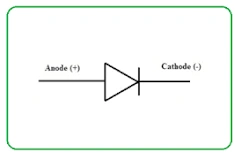
Characteristics
Forward Voltage Drop: Typically 0.7V (Silicon) or 0.3V (Germanium).
Breakdown Voltage: Maximum reverse voltage a diode can withstand before failing.
Current Rating: Maximum current it can handle before overheating.
How It Works
Forward Bias: When voltage is applied in the correct direction, current flows.
Reverse Bias: When voltage is applied in the opposite direction, no current flows (except for a small leakage current).
Breakdown Region: If reverse voltage exceeds the breakdown limit, the diode conducts in reverse, often damaging it (except for Zener diodes).
Applications
Rectification: Converts AC to DC in power supplies.
Voltage Regulation: Stabilizes voltage with Zener diodes.
Signal Clipping & Clamping: Shapes waveforms in communication circuits.
Protection Circuits: Prevents reverse polarity damage.
Light Emission: Used in indicators, displays, and lighting.
Transistor
A transistor is a semiconductor device that amplifies (strengthens) or switches electrical signals. It is a fundamental building block in modern electronics, found in everything from microcontrollers to amplifiers.
A common analogy is a water tap: a small signal (like turning the tap handle) controls a much larger current flow.
Symbol
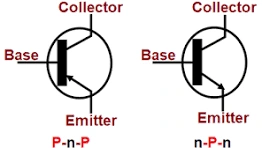
Unit of Measurement & Characteristics
Gain (hFE or β): The ratio of output current to input current.
Voltage Ratings: Maximum voltage it can handle.
Current Ratings: Maximum current it can pass without damage.
Types & Variations
BJTs (Bipolar Junction Transistors):
NPN Transistors: Common in switching circuits.
PNP Transistors: Used in complementary circuits.
MOSFETs (Metal-Oxide-Semiconductor FETs):
Enhancement Mode MOSFETs: Used in digital circuits.
Depletion Mode MOSFETs: Used in analog circuits.
JFETs (Junction Field-Effect Transistors): Used in signal processing.
Darlington Transistors: High gain, used in power amplification.
How It Works
BJT (Bipolar Junction Transistor): Controls large current between collector and emitter using a small base current.
MOSFET (Metal-Oxide-Semiconductor Field-Effect Transistor): Uses a voltage at the gate terminal to control current flow between drain and source.
Applications
Switching: Turns circuits on and off (e.g., microcontroller outputs).
Amplification: Used in audio and radio applications.
Signal Modulation: Forms the basis of RF communication.
Voltage Regulation: Stabilizes power supplies.
Digital Logic Circuits: Forms the basis of microprocessors and logic gates.
Now that you understand these fundamental components, you can say that you took the first step to mastering electronics. Whether you're building simple projects or testing advanced circuits, these building blocks are at the heart of it all.
Like this project
0
Posted Feb 1, 2025
In this article, I explained the fundamental electronic components. The content was structured clearly, and my approach made complex concepts easily accessible.




